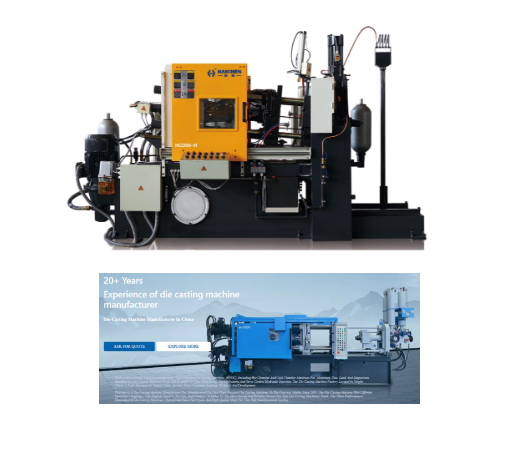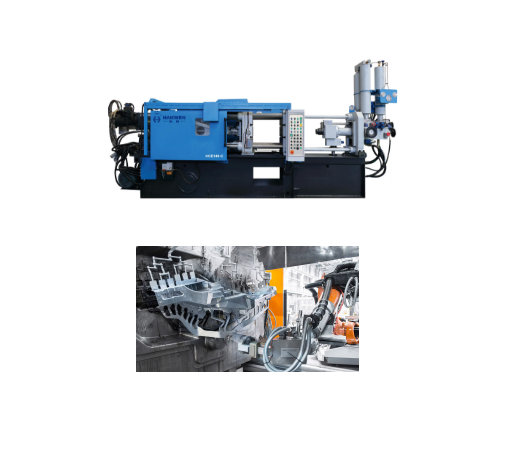Die casting is one of the preferred processes in the manufacturing industry due to its efficiency, precision, and flexibility, particularly suitable for high-volume production of complex metal parts.
Die Casting is a metal casting process that involves injecting molten metal into a mold at high pressure and rapidly cooling it to produce high-precision, complex-shaped parts.
Benefits of die casting, with its high efficiency, high precision and material adaptability has become a core manufacturing technology in the fields of automobiles, electronics, and home appliances.
Definition and core principles of Die Casting
Die casting uses a manufacturing process where machines inject molten metal into reusable steel molds crafted from hardened tool steel.
The process utilizes fast filling and high pressures (typically 1,500 to 15,000 psi) to achieve precise molding of complex shapes.
The core steps include mold preparation, injection molding, cooling, demoulding, and trimming.
Based on the melting points of metals, die casting processes fall into two categories:
Hot chamber die casting for zinc and magnesium alloys, and cold chamber die casting for aluminum and copper alloys.

Benefits of die casting
- High precision and complex geometries
- Productivity & Economies of Scale
- Optimization of material properties
- Cost-effective and environmentally friendly
High precision and complex geometries
Die casting produces precision parts with very tight tolerances (± 0.1 mm) and reproduces details.
Such as textures and logos without the need for secondary operations.
For example, die casting can directly mold the delicate heat dissipation holes in the enclosure of electronic devices.
Productivity & Economies of Scale
Single cycle times are as short as 1 second, making them suitable for high-volume production.
The mold life is up to more than 100,000 times, which significantly reduces the cost per piece.
Compared with sand casting, die-casting does not need to change molds frequently, and the efficiency is increased by 5-10 times.

Optimization of material properties
Thin-walled construction
High-pressure injection molding allows wall thicknesses as low as 0.5 mm, making it suitable for lightweight designs (e.g. aerospace components).
Mechanical strength
Rapid cooling to form a fine-grained structure, improving part fatigue resistance and surface hardness.
Cost-effective and environmentally friendly
The material utilization rate is more than 95%, and the waste can be recycled through the furnace.
Benefits of die casting,reducing machining requirements further reduce energy consumption.
Versatile integration Inserts (e.g. threaded sleeves, sensors) can be cast in a single pass, simplifying the assembly process.
For example, the bearing housing of an automotive engine block has a metal bushing directly integrated.
Common Products & Application Cases
- Automotive Industry
- Consumer electronics
- Heat dissipation components
- Household appliances
Automotive Industry
Engine components
Aluminum cylinder heads, such as the Ford EcoBoost engine, combine light weight and high strength by cold chamber die-casting, with a wall thickness uniformity error of <1%.
Transmission housing
Magnesium alloy die-cast housings (such as the Tesla Model 3) weigh up to 40% less than traditional steel parts while maintaining rigidity.
Structural parts
Suspension bracket and battery tray are made of vacuum die-casting technology to reduce porosity to less than 0.5%.

Consumer electronics
Device shell
Apple uses aluminum die-casting to create the MacBook body.
The manufacturing process achieves the integrated Unibody design through anodizing, with a surface roughness of Ra≤1.6μm.
Heat dissipation components
The GPU heat dissipation fins are die-cast by zinc alloy, and the thermal conductivity is increased by 30%.
Household appliances
Compressor bracket
The aluminum alloy bracket for refrigerator can carry 500kg static load, and the production cycle time is up to 120 pieces/hour.
Motor housing
The motor housing of the washing machine is die-cast from zinc alloy, and the corrosion resistance has passed the salt spray test for more than 1,000 hours.
Aerospace turbine blades
Magnesium alloy die-cast blades have a tensile strength of 320MPa after T6 heat treatment, which is 20% lighter than traditional forgings.
Cabin structural parts
The seat bracket is made of vacuum-assisted die-casting, and the porosity is controlled within 0.2% to meet aviation standards.

Typical application fields and products of die castings
- Automotive industry
- Electronics and home appliances
- Industrial & Energy Equipment
- Aerospace & Medical Aviation
- Medical
- Cases in emerging fields
Automotive industry
Power system
Engine block, cylinder head, crankcase, oil pan, clutch housing.
Such as CVT transmission housing to solve shrinkage defects through high-pressure spot cooling technology).
Structural parts
Body reinforcing beams, suspension brackets, battery pack shells (the integrated die-casting technology of new energy vehicles can reduce the number of parts by 30%).
Other parts
Alloy wheels, brake calipers, steering knuckles.
Electronics and home appliances
Consumer electronics: metal shells for mobile phones/notebooks (such as MacBook Unibody), heat sinks, camera mounts.
Home appliances
Air conditioner compressor housing, washing machine drum bracket, refrigerator door hinge (zinc alloy die-casting has strong corrosion resistance).

Industrial & Energy Equipment
Hydraulic system
Pump body, valve block (copper alloy die-casting parts are resistant to high pressure).
Energy equipment
Wind turbine gearbox housings, nuclear power plant cooling pipe joints.
Aerospace & Medical Aviation
Aircraft seat frames, non-load-bearing door accessories (magnesium alloy weight reduction by 30%).
Medical
Surgical instrument handles, X-ray machine stents (no pores on the surface, easy to sterilize).
Cases in emerging fields
Super-large die-casting
The rear floor of the Tesla Model Y is integrally molded by a 6000T die-casting machine, reducing 79 welding points.
Material innovation
Heat-free aluminum alloys (such as AlSi10MnMg) are used in structural parts of new energy vehicles to avoid high-temperature deformation.



